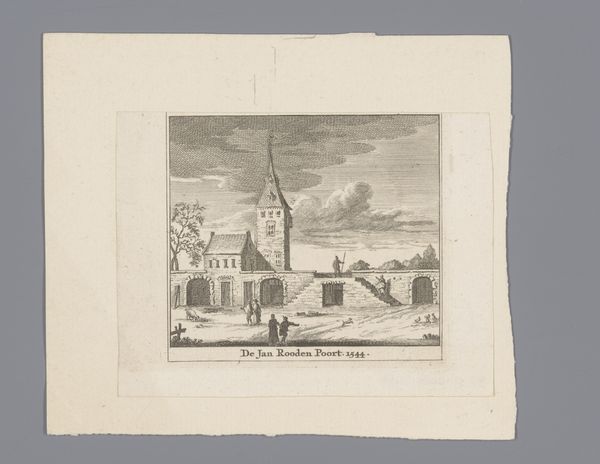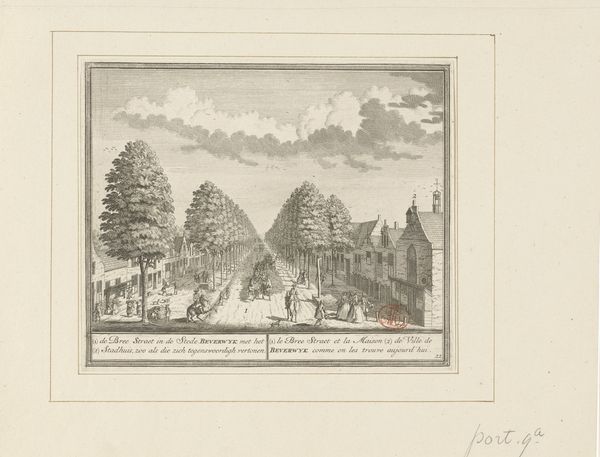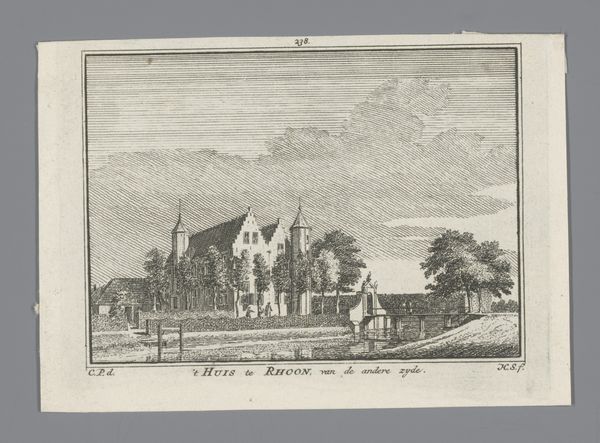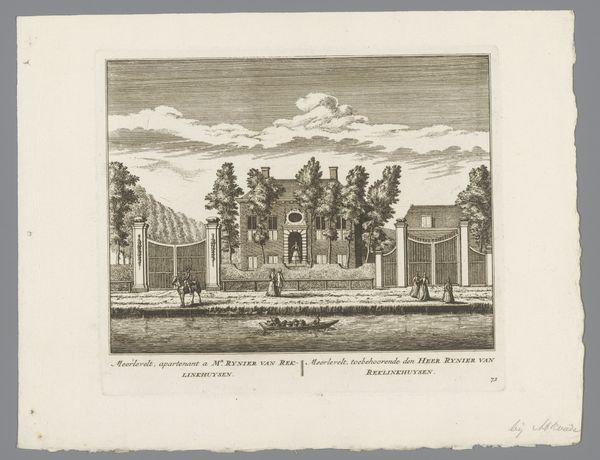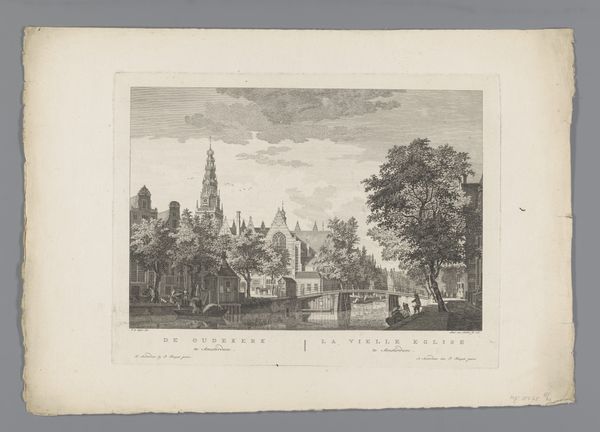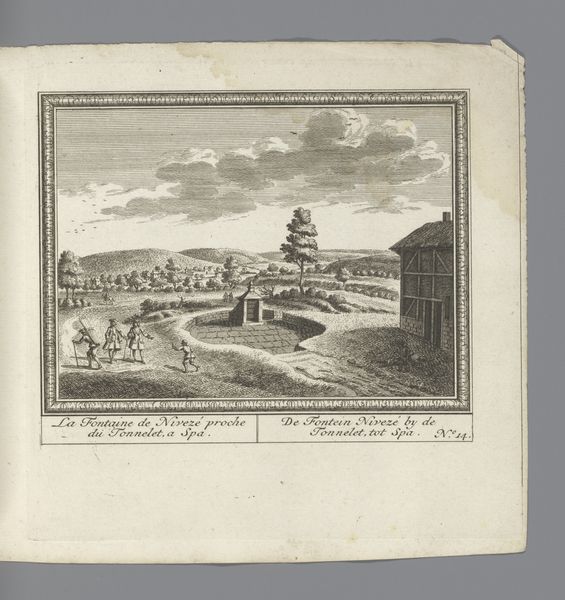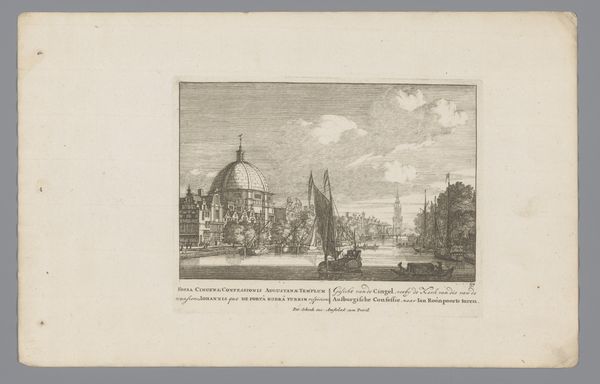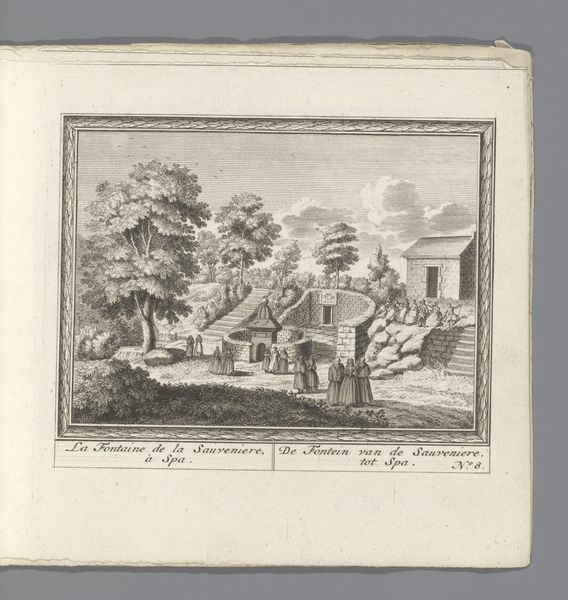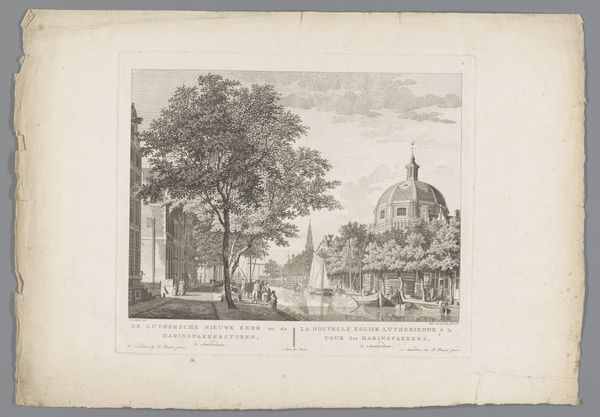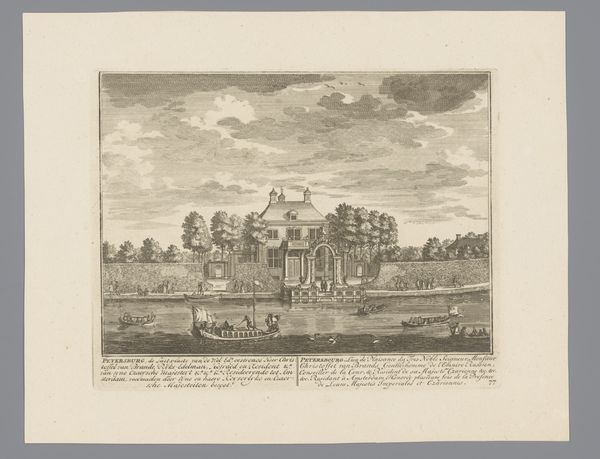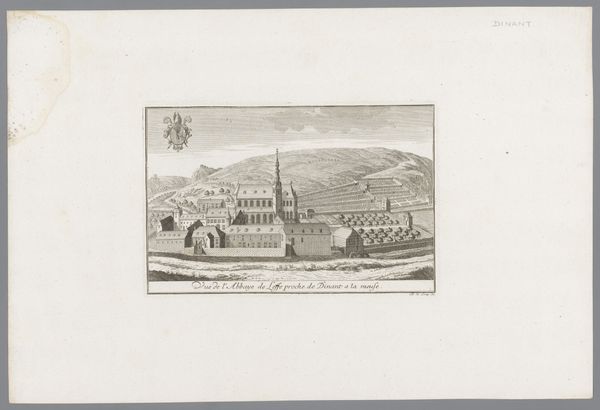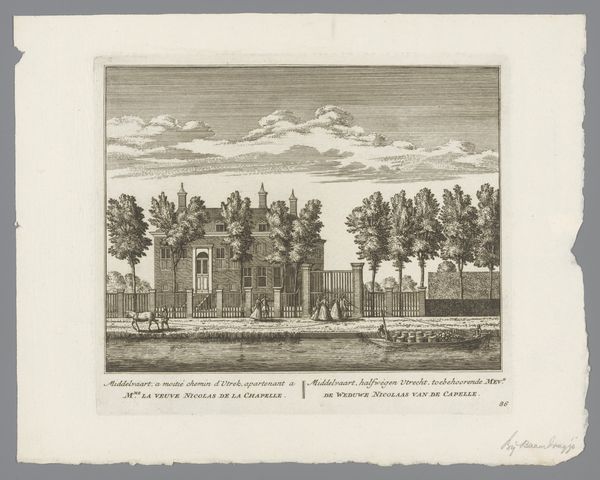
print, engraving
#
dutch-golden-age
# print
#
landscape
#
line
#
cityscape
#
engraving
#
realism
Dimensions: height 88 mm, width 114 mm
Copyright: Rijks Museum: Open Domain
Curator: Look at the detail in this cityscape, the precision of each line, the way it captures the atmosphere. Editor: Yes, it feels quiet, orderly. Not particularly dynamic, but balanced. Almost like a placid observation on Dutch society. I notice that church towering over the more "worldly" meat hall. Curator: What you are viewing here is "Gezicht op de Westerkerk en Westerhal te Amsterdam," translating to "View of the Westerkerk and Westerhal in Amsterdam." It's an engraving, likely dating from around 1725, a fascinating era in Amsterdam’s evolution. Notice how it frames the Westerkerk and meat hall with what seems like very deliberate staging. Editor: The framing emphasizes the architectural contrast—a grand religious structure and then this public building devoted to sustenance. In iconography, aren’t those towers and steeples often symbolic of aspirations that go beyond the material world? Curator: Precisely! The Westerkerk served as more than just a religious institution; it represented the spiritual heart of Amsterdam. And locating the hall nearby suggests civic life intertwined, but distinctly separate, which highlights an increasing public identity. Do you note the people going for a stroll? Editor: I do. It seems a very public statement regarding the position of church, state, and the pedestrian citizen. As Amsterdam expanded commercially, images such as this one also aided navigation by serving as way-finding devices. Were there other significant images with similar social and navigational functions? Curator: Indeed. This kind of print proliferated— functioned almost like public documents helping people understand space and claim the benefits and the identity of that space. The choice to feature those two buildings specifically speaks to their civic significance, offering reassurance but perhaps also calling up power relations. The church isn't simply present, it dominates the composition. Editor: A silent assertion, captured so precisely in ink. A snapshot of power, etched into time. It makes me wonder about all the unseen stories these buildings silently hold.
Comments
No comments
Be the first to comment and join the conversation on the ultimate creative platform.
